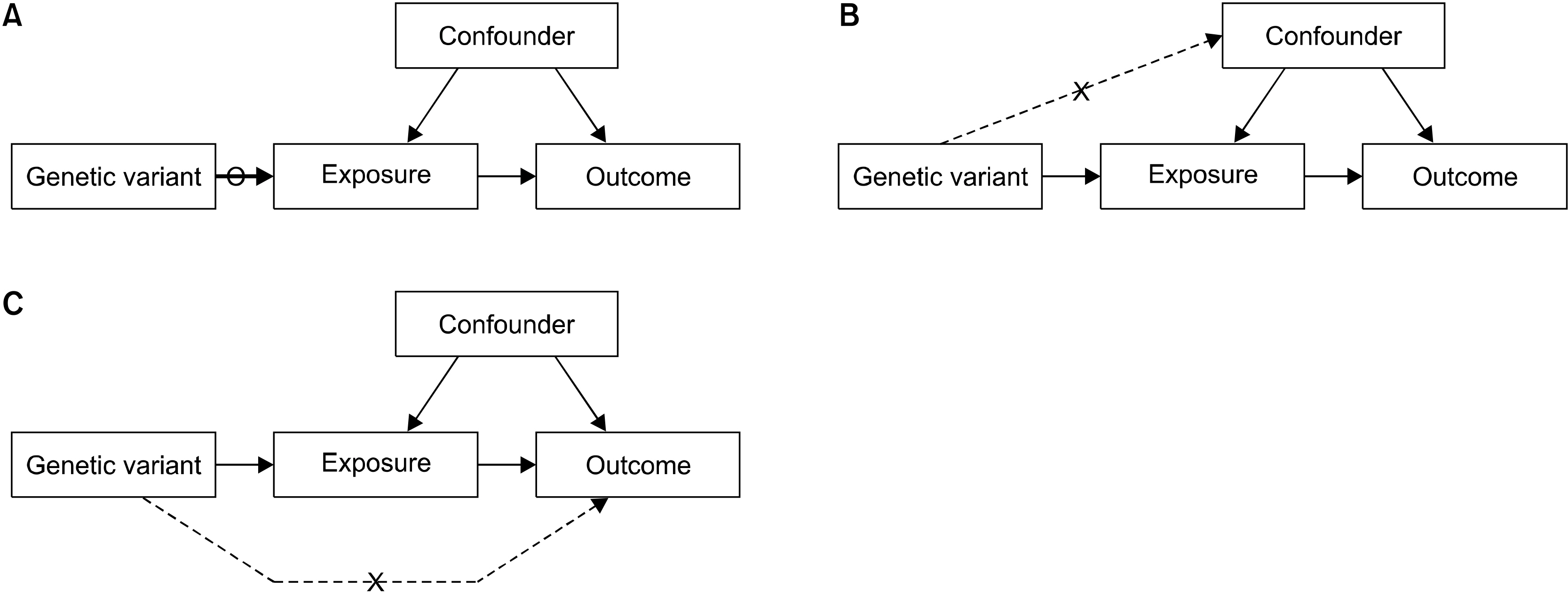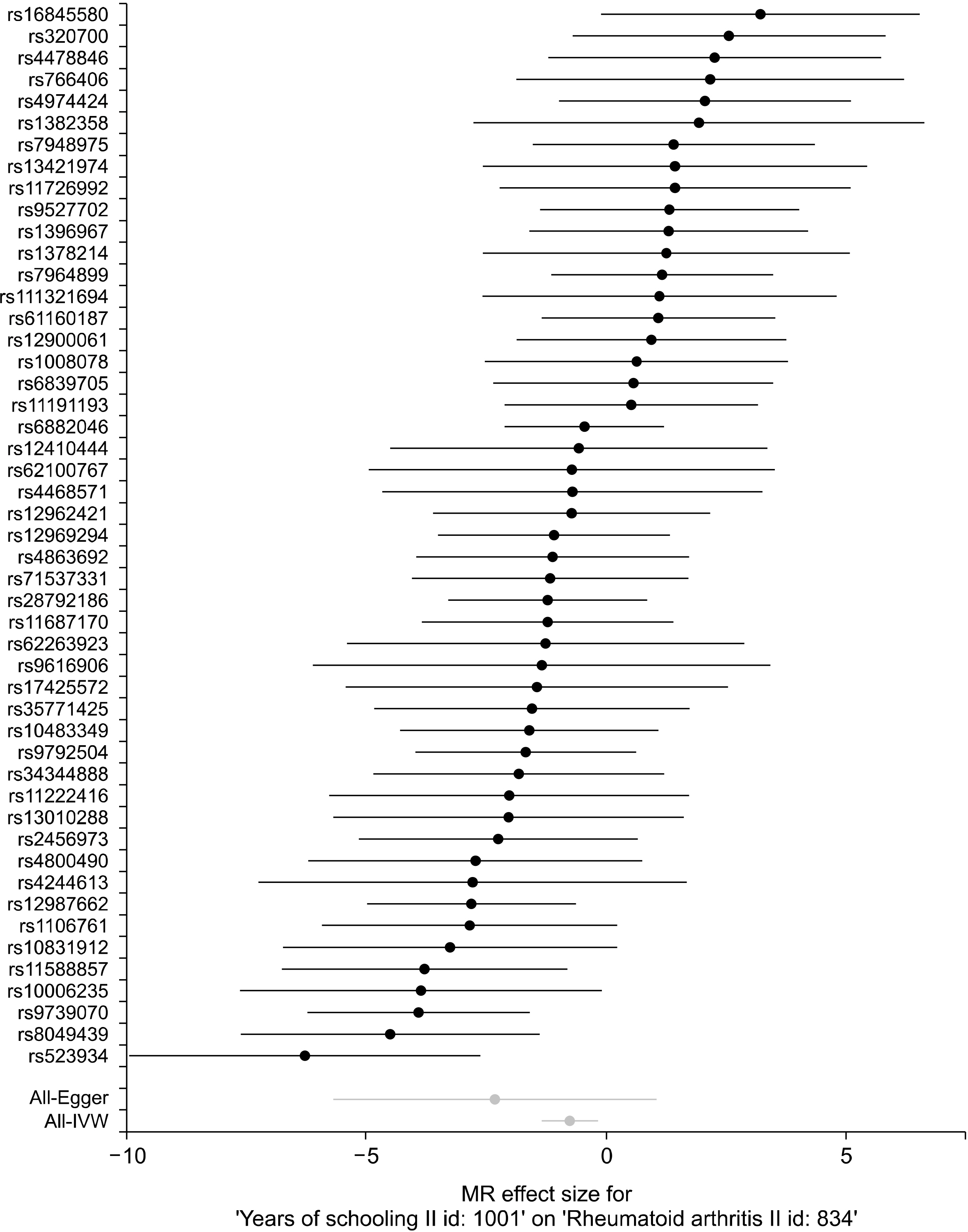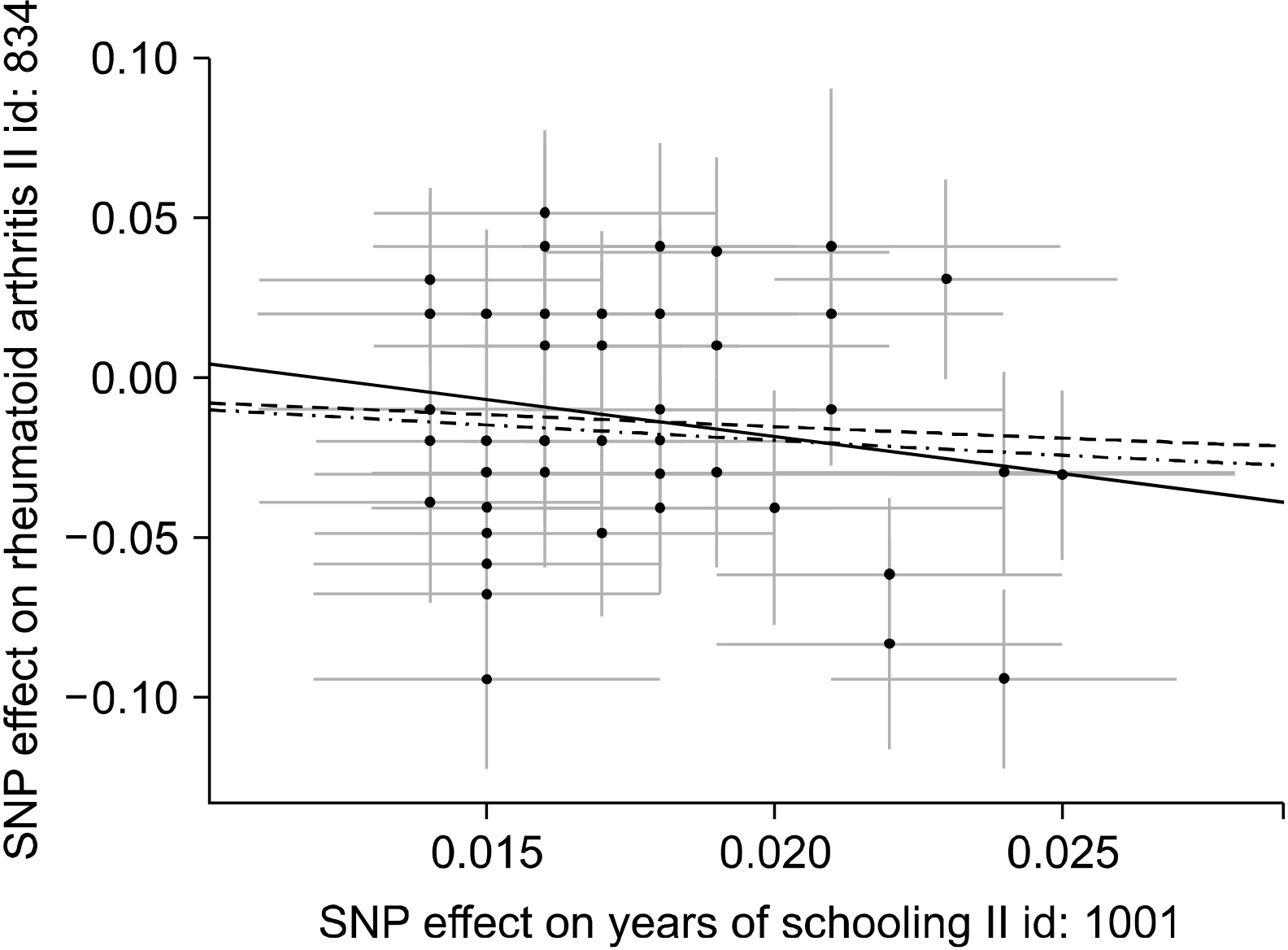2. Greenwald P. 2003; Beta-carotene and lung cancer: a lesson for future chemoprevention investigations? J Natl Cancer Inst. 95:E1. DOI:
10.1093/jnci/95.10.e4. PMID:
12759404.
3. Lawlor DA, Davey Smith G, Kundu D, Bruckdorfer KR, Ebrahim S. 2004; Those confounded vitamins: what can we learn from the differences between observational versus randomised trial evidence? Lancet. 363:1724–7. DOI:
10.1016/S0140-6736(04)16260-0. PMID:
15158637.

5. Wehby GL, Ohsfeldt RL, Murray JC. 2008; 'Mendelian randomization' equals instrumental variable analysis with genetic instruments. Stat Med. 27:2745–9. DOI:
10.1002/sim.3308. PMID:
18509868.

6. Zheng J, Baird D, Borges MC, Bowden J, Hemani G, Haycock P, et al. 2017; Recent developments in Mendelian randomization studies. Curr Epidemiol Rep. 4:330–45. DOI:
10.1007/s40471-017-0128-6. PMID:
29226067. PMCID:
PMC5711966.

7. Angrist JD, Imbens GW, Rubin DB. 1996; Identification of causal effects using instrumental variables. J Am Stat Assoc. 91:444–55. DOI:
10.1002/bimj.201200104. PMID:
23180483.

8. Lawlor DA. 2016; Commentary: two-sample Mendelian randomization: opportunities and challenges. Int J Epidemiol. 45:908–15. DOI:
10.1093/ije/dyw127. PMID:
27427429. PMCID:
PMC5005949.

9. Lawlor DA, Harbord RM, Sterne JA, Timpson N, Davey Smith G. 2008; Mendelian randomization: using genes as instruments for making causal inferences in epidemiology. Stat Med. 27:1133–63. DOI:
10.1002/sim.3213. PMID:
18203119.

11. Burgess S, Butterworth A, Thompson SG. 2013; Mendelian randomization analysis with multiple genetic variants using summarized data. Genet Epidemiol. 37:658–65. DOI:
10.1002/gepi.21758. PMID:
24114802. PMCID:
PMC4377079.

12. Bowden J, Davey Smith G, Burgess S. 2015; Mendelian randomization with invalid instruments: effect estimation and bias detection through Egger regression. Int J Epidemiol. 44:512–25. DOI:
10.1093/ije/dyv080. PMID:
26050253. PMCID:
PMC4469799.

14. Bowden J, Davey Smith G, Haycock PC, Burgess S. 2016; Consistent estimation in Mendelian randomization with some invalid instruments using a weighted median estimator. Genet Epidemiol. 40:304–14. DOI:
10.1002/gepi.21965. PMID:
27061298. PMCID:
PMC4849733.

15. Davey Smith G, Hemani G. 2014; Mendelian randomization: genetic anchors for causal inference in epidemiological studies. Hum Mol Genet. 23:R89–98. DOI:
10.1093/hmg/ddu328. PMID:
25064373. PMCID:
PMC4170722.

17. Swerdlow DI, Kuchenbaecker KB, Shah S, Sofat R, Holmes MV, White J, et al. 2016; Selecting instruments for Mendelian randomization in the wake of genome-wide association studies. Int J Epidemiol. 45:1600–16. DOI:
10.1093/ije/dyw088. PMID:
27342221. PMCID:
PMC5100611.

18. Sekula P, Del Greco MF, Pattaro C, Köttgen A. 2016; Mendelian randomization as an approach to assess causality using observational data. J Am Soc Nephrol. 27:3253–65. DOI:
10.1681/ASN.2016010098. PMID:
27486138. PMCID:
PMC5084898.

19. Pincus T, Callahan LF. 1985; Formal education as a marker for increased mortality and morbidity in rheumatoid arthritis. J Chronic Dis. 38:973–84. DOI:
10.1016/0021-9681(85)90095-5. PMID:
4066893.

20. Kwon JM, Rhee J, Ku H, Lee EK. 2012; Socioeconomic and employment status of patients with rheumatoid arthritis in Korea. Epidemiol Health. 34:e2012003. DOI:
10.4178/epih/e2012003. PMID:
22611518. PMCID:
PMC3350820.

21. Uhlig T, Hagen KB, Kvien TK. 1999; Current tobacco smoking, formal education, and the risk of rheumatoid arthritis. J Rheumatol. 26:47–54. PMID:
9918239.
22. Okbay A, Beauchamp JP, Fontana MA, Lee JJ, Pers TH, Rietveld CA, et al. 2016; Genome-wide association study identifies 74 loci associated with educational attainment. Nature. 533:539–42. DOI:
10.3389/fnmol.2017.00023. PMID:
28197077. PMCID:
PMC5281599.
23. Stahl EA, Raychaudhuri S, Remmers EF, Xie G, Eyre S, Thomson BP, et al. 2010; Genome-wide association study meta-analysis identifies seven new rheumatoid arthritis risk loci. Nat Genet. 42:508–14. DOI:
10.1038/ng.582. PMID:
20453842. PMCID:
PMC4243840.







 PDF
PDF Citation
Citation Print
Print




 XML Download
XML Download